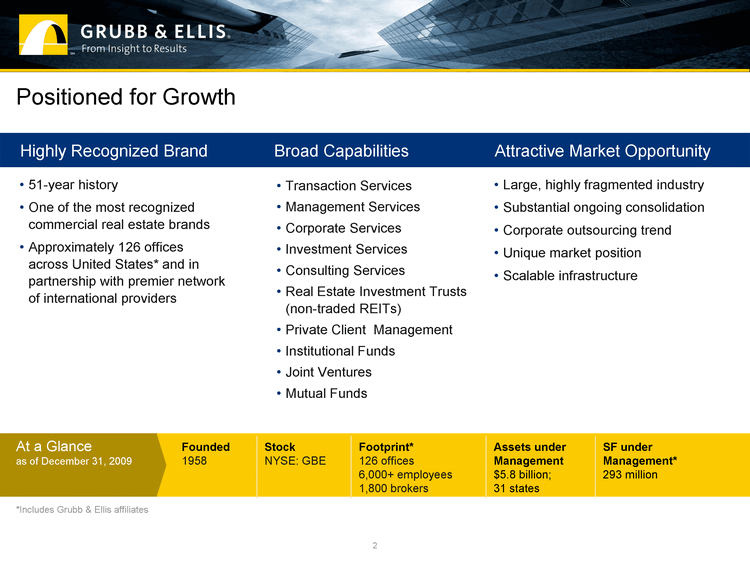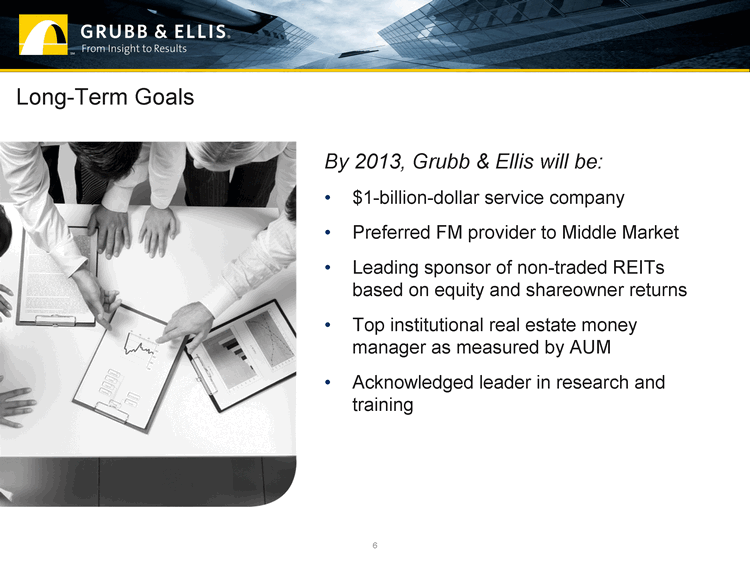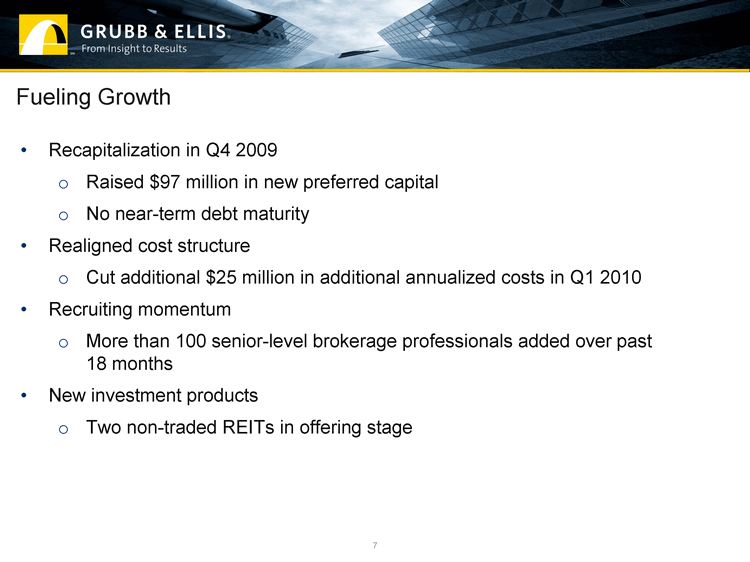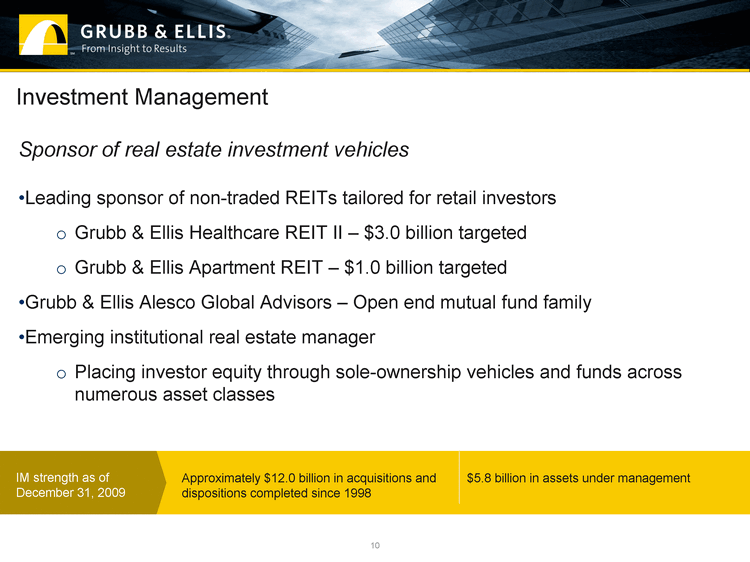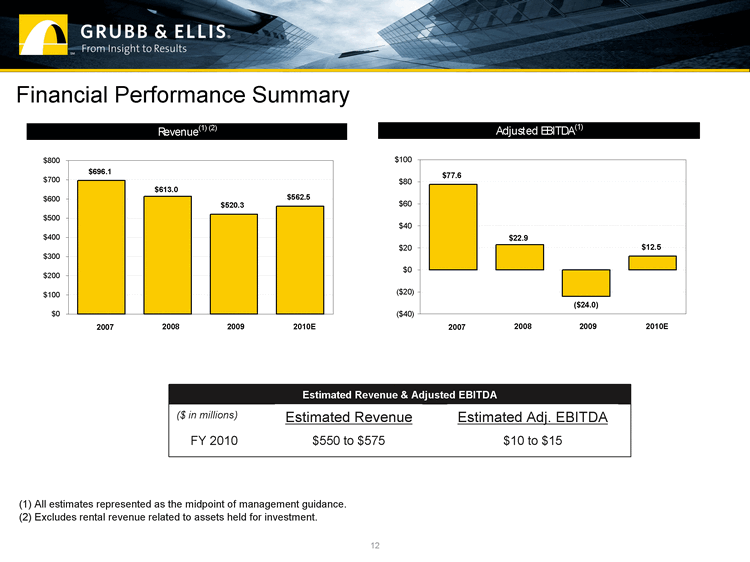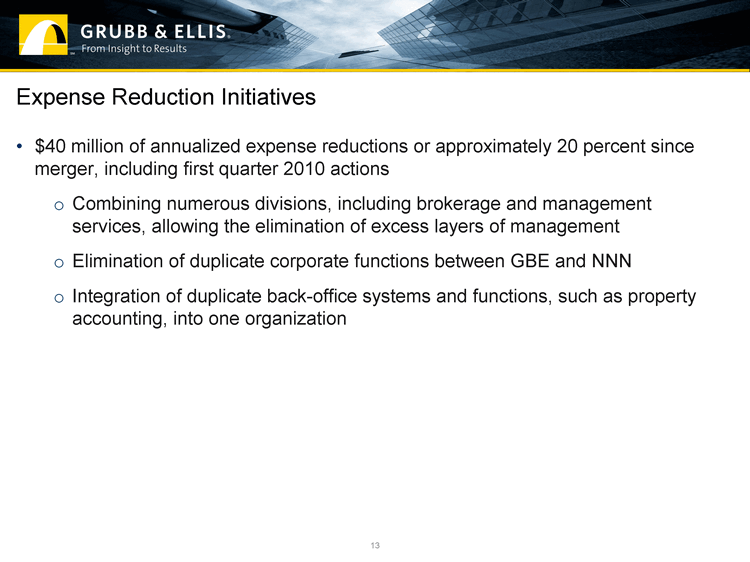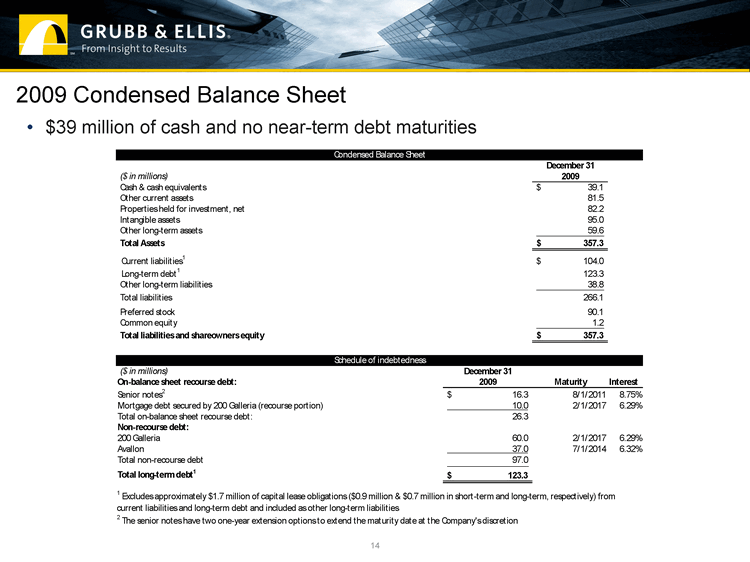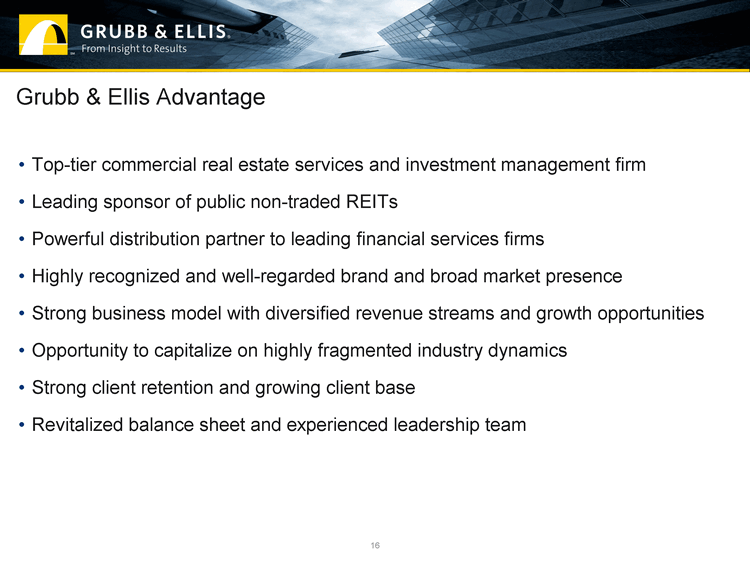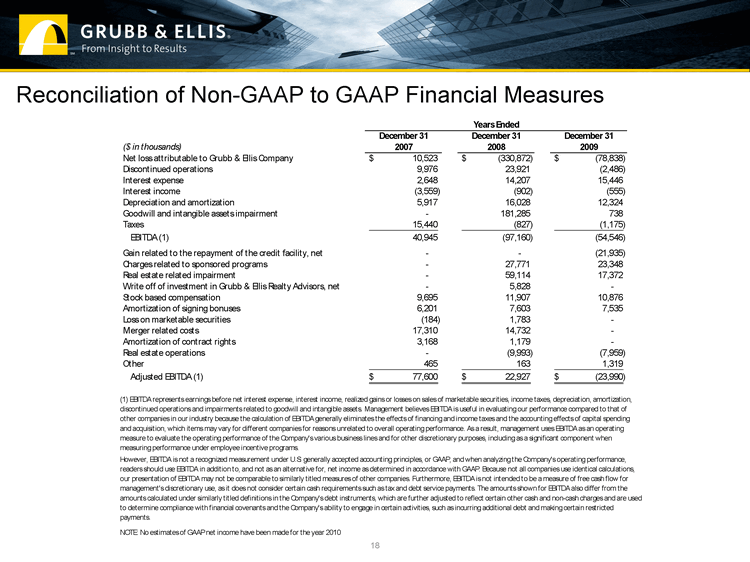| 18 Reconciliation of Non-GAAP to GAAP Financial Measures December 31 December 31 December 31 ($ in thousands) 2007 2008 2009 Net loss attributable to Grubb & Ellis Company 10,523 $ (330,872) $ (78,838) $ Discontinued operations 9,976 23,921 (2,486) Interest expense 2,648 14,207 15,446 Interest income (3,559) (902) (555) Depreciation and amortization 5,917 16,028 12,324 Goodwill and intangible assets impairment - - 181,285 738 Taxes 15,440 (827) (1,175) EBITDA (1) 40,945 (97,160) (54,546) Gain related to the repayment of the credit facility, net - - - - (21,935) Charges related to sponsored programs - - 27,771 23,348 Real estate related impairment - - 59,114 17,372 Write off of investment in Grubb & Ellis Realty Advisors, net - - 5,828 - - Stock based compensation 9,695 11,907 10,876 Amortization of signing bonuses 6,201 7,603 7,535 Loss on marketable securities (184) 1,783 - - Merger related costs 17,310 14,732 - - Amortization of contract rights 3,168 1,179 - - Real estate operations - - (9,993) (7,959) Other 465 163 1,319 Adjusted EBITDA (1) 77,600 $ 22,927 $ (23,990) $ NOTE: No estimates of GAAP net income have been made for the year 2010 Years Ended (1) EBITDA represents earnings before net interest expense, interest income, realized gains or losses on sales of marketable securities, income taxes, depreciation, amortization, discontinued operations and impairments related to goodwill and intangible assets. Management believes EBITDA is useful in evaluating our performance compared to that of other companies in our industry because the calculation of EBITDA generally eliminates the effects of financing and income taxes and the accounting effects of capital spending and acquisition, which items may vary for different companies for reasons unrelated to overall operating performance. As a result, management uses EBITDA as an operating measure to evaluate the operating performance of the Company's various business lines and for other discretionary purposes, including as a significant component when measuring performance under employee incentive programs. However, EBITDA is not a recognized measurement under U.S. generally accepted accounting principles, or GAAP, and when analyzing the Company's operating performance, readers should use EBITDA in addition to, and not as an alternative for, net income as determined in accordance with GAAP. Because not all companies use identical calculations, our presentation of EBITDA may not be comparable to similarly titled measures of other companies. Furthermore, EBITDA is not intended to be a measure of free cash flow for management's discretionary use, as it does not consider certain cash requirements such as tax and debt service payments. The amounts shown for EBITDA also differ from the amounts calculated under similarly titled definitions in the Company's debt instruments, which are further adjusted to reflect certain other cash and non-cash charges and are used to determine compliance with financial covenants and the Company's ability to engage in certain activities, such as incurring additional debt and making certain restricted payments. |


